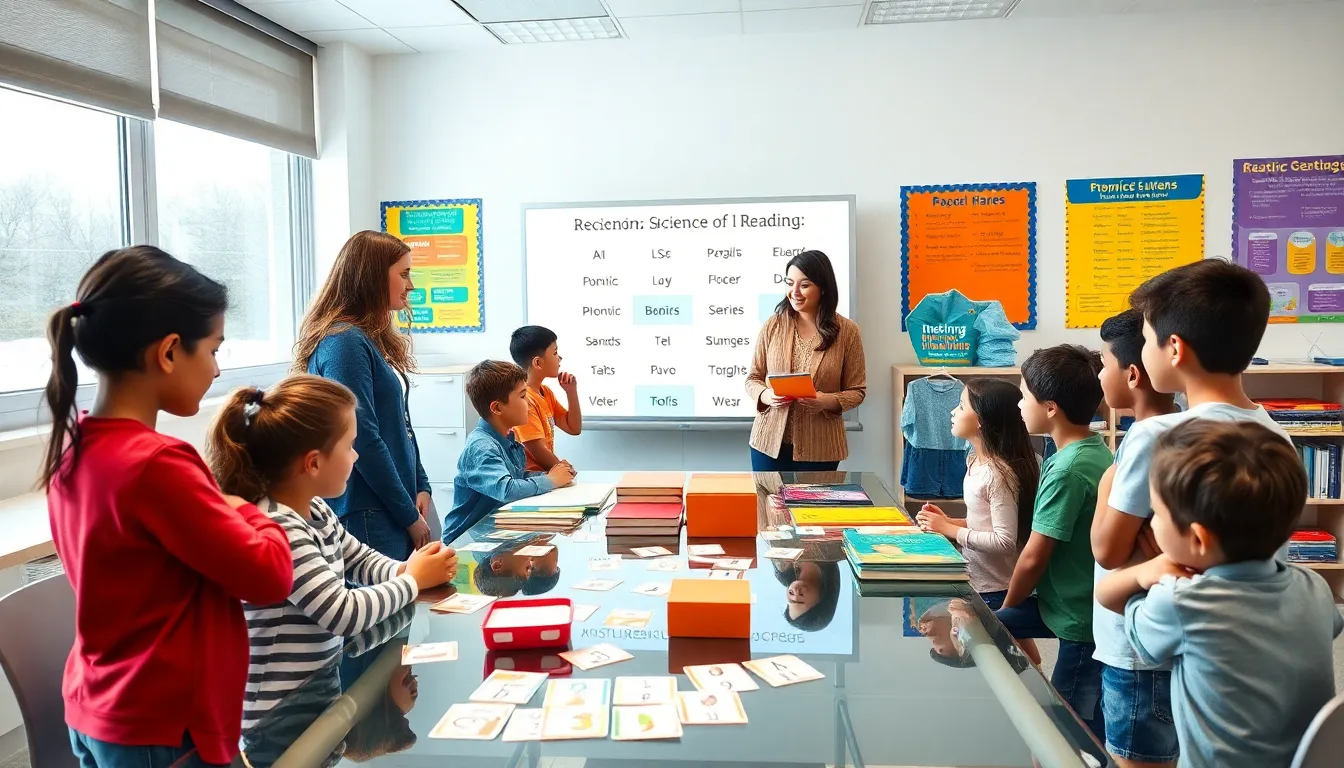Table of Contents
ToggleImagine it’s a sunny day, and your students are bouncy with curiosity. But wait, you realize their reading skills are about as solid as a paper boat on a stormy sea. How can we transform those struggling readers into confident storytellers? That’s where the Science of Reading comes into play, scientifically proven to supercharge literacy instruction. This article dives deep into the nitty-gritty of literacy blocks, breaking down methodologies that could make even the most reluctant reader excited to jump into a new book.
Understanding the Science of Reading

The Science of Reading draws from decades of research across cognitive science, education, and child development to create a robust framework for literacy instruction. In essence, it’s not just about teaching kids to read: it’s about understanding how they learn. Researchers have discovered that reading is a complex skill, involving decoding, comprehension, and fluency. These elements intertwine to help students move from recognizing letters to crafting beautifully intricate stories.
One core principle is the connection between phonemic awareness, the ability to hear and manipulate sounds, and reading success. Children, especially those struggling with reading, benefit immensely when educators incorporate systematic phonics instruction into their lessons. Why? Because it turns the abstract world of letters into a tangible learning experience. For instance, learning that changing the first sound in “cat” to “h” creates a new word, “hat,” opens up a new realm of literacy for children. This dual focus on decoding and comprehension sets the foundation for effective literacy blocks.
Key Components of Literacy Instruction
When mapping out an effective literacy instruction strategy, consider incorporating the five essential components identified in the Science of Reading:
- Phonemic Awareness: Engaging students in activities that encourage sound manipulation. Activities like rhyming games can be a fun way to build awareness without the pressure of text.
- Phonics: Using direct instruction in phonics to help students connect sounds to their written counterparts. This includes recognizing the various sounds letters can make and how they blend together in words.
- Fluency: Practicing reading aloud to gain speed and expression. It’s like training to run a race: the more you practice, the better you get.
- Vocabulary: Building a robust vocabulary supply to help students understand what they read. Introducing new words in context not only aids retention but also encourages students to use those words in everyday conversation.
- Comprehension: Instilling strategies for understanding text. Teaching children to ask questions, visualize scenarios, and summarize what they read can enhance comprehension skills significantly.
These components work synergistically. When educators incorporate healthy doses of each into their literacy blocks, students are more likely to grasp essential reading skills.
Implementing Effective Literacy Blocks
Creating a successful literacy block hinges on careful planning and execution. A well-structured literacy block typically consists of three main components: whole group instruction, small group guided reading, and independent reading time.
Whole Group Instruction: This is where teachers set the stage, introducing new concepts or strategies. Think of it as a movie trailer that gets everyone excited about the upcoming feature. Incorporating interactive elements such as games or storytelling not only captivates attention but also helps students absorb core concepts.
Small Group Guided Reading: Here’s where the magic really happens. Teachers work with small groups to provide targeted instruction tailored to each student’s needs. This allows for more personalized support during instruction. For example, while some students practice phonics, others could jump into comprehension activities or expanding vocabulary.
Independent Reading Time: Finally, let kids explore texts on their own. Allowing them to choose books that interest them can ignite a passion for reading. It’s also a critical period to model fluency and comprehension strategies. Remember, the more choices they have, the more they will feel in control of their learning.
Assessing Literacy Development
Monitoring student progress doesn’t just inform instruction, it can ignite a teacher’s passion as they observe growth. Regular assessments can be structured or informal, and they help identify areas where individual students might struggle or excel.
Formative assessments are designed to be low stakes, allowing teachers to solicit student feedback and make real-time changes to their instructional approach. For instance, using reading logs or informal observations during reading time can provide insights without the dreaded stress of standardized tests.
Summative assessments, on the other hand, are more formal and evaluative. Think of using them at the end of a unit to measure students’ mastery of specific concepts. Balancing both types is essential to have a deeper understanding of literacy development.
Also, tools like running records and interest inventories can offer nuanced views of student strengths and weaknesses.
Challenges in Literacy Instruction
Navigating the world of literacy instruction can feel like threading a needle in the dark: there are challenges lurking around every corner. One significant obstacle many educators face is engaging diverse learners. Every classroom is a melting pot of backgrounds, experiences, and learning styles, making one-size-fits-all instruction ineffective.
Another common challenge is emotional factors. Students who struggle with reading may develop negative self-perceptions, making them hesitant to participate in literacy activities. Also, time constraints can limit the breadth of instruction that teachers can effectively deliver within their busy schedules. Even resources may fall short: inadequate materials can hinder the effectiveness of a literacy block.
Strategies for Overcoming Challenges
Though challenges abound, there are countless strategies available to turn the tide. First and foremost, differentiated instruction is vital. Tailoring lessons to meet the varying needs of students can see those once straggling readers flourish. Try incorporating varied texts at different reading levels into small groups. This lets every child engage meaningfully without feeling overwhelmed.
Next, fostering a supportive classroom environment is key. Creating opportunities for collaborative learning can ease emotional hurdles. Activities such as paired reading or reader’s theater can bolster confidence and camaraderie among students.
Embracing technology can also fill gaps in resources. Digital platforms often provide engaging literacy activities tailored to different skill levels. Utilizing these tools not only enhances instruction but can also captivate students’ attention.
Finally, don’t underestimate the power of professional development. Investing in training for educators can ignite a culture of continuous improvement. With the right support, teachers can become adept at implementing the Science of Reading in their classrooms.





